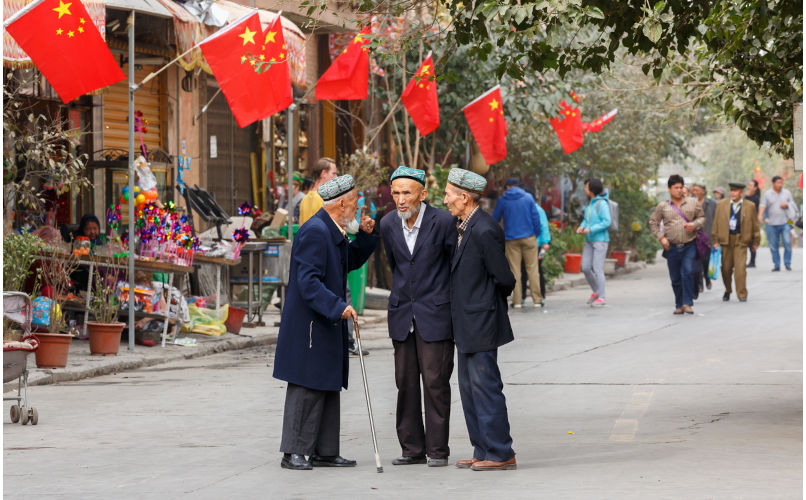Is China repeating Australias mistake on Indigenous Affairs?
February 26, 2024
The South China Morning Post recently published an illuminating article on Chinas policy towards ethnic minorities, with a particular focus on Inner Mongolia that has strived hardest to assimilate its Mongols with the rest of the Chinese population to promote a single national identity. But does China’s policy reflect the assimilation policies towards First Nations that Australia adopted in the 1930s and has now come to regret?
Within China, ethnic minorities number 125 million, about 9% of the total population. China has five autonomous regions, Tibet, Xinjiang, Inner Mongolia. Ningxia Hui and Guangxi Zhuang with either ethnic majority or minority inhabitants.
In each case much has been achieved to develop modern transport, schools, hospitals, housing, and industrial employment to replace subsistence agriculture and poverty. President Xis says the stated purpose is to achieve a strong sense of community for the Chinese nation.
The accusation
But critics say Chinas policy of assimilation amounts to the gradual erosion of minority languages, cultures, and identities by encouraging intermarriage and adoption of Han culture, food, secularism, and its official language (Mandarin). And it is colonising autonomous regions by resettling Han Chinese from overcrowded parts of China. If so, it parallels what Australia did with its indigenous people once it realised, they would not die out.
Assimilation became Australias official policy in 1937, with the aim to forcibly absorb First Nations people into the broader population. It sought to erase Aboriginal culture, family ties, and communities, addressing what was then referred to as the Aboriginal problem. The worst example was half-cast Aboriginal children being forcibly removed from their families and often placed in government-approved foster homes or white institutions.
By the 1950s, the goal of assimilation became widely accepted for all Aboriginal people. Both the Commonwealth and State Governments adopted it as official policy. It was only after Indigenous people got voting rights in 1965 and recognised as inhabitants in the 1967 census referendum that Australian official policy moved from that of assimilation to recognition of indigenous people as having a unique identity worth protecting and fostering.
Critics accuse China of repeating Australias mistake of trying to absorb its indigenous ethnic peoples into its wider population to achieve social inclusion, harmony, and unity which as we know backfired badly. Also, for the 9% being assimilated in China and encouraged to intermarry with Han people it may generate an identity crisis and trauma that could take generations to overcome.
Critics say China is breaching the United Nations Declaration on the Rights of Indigenous Peoples (2007) which established a universal framework of minimum standards for the survival, dignity, and well-being of the indigenous peoples of the world.
Chinas retort
China insists it is abiding by the UN Declaration on Indigenous Rights through promoting bilingual education in regions with significant ethnic minority populations. Students learn both Mandarin (the official language) and their native ethnic language to ensures that they can communicate effectively in both.
Also, ethnic minority languages are used in local media, literature, and broadcasting to promote cultural pride and encourages language retention. It says it encourages cultural exchange between ethnic groups. Festivals, art exhibitions, and performances celebrate diverse traditions to foster mutual understanding and appreciation.
While China is officially atheist, it recognises five major religions: Buddhism, Taoism, Islam, Catholicism, and Protestantism. It claims ethnic minorities are allowed to practice their faith and that mosques, temples, and churches exist in minority regions.
It says that its autonomous regions are self-governing to protect their unique cultural identities by making decisions related to language, education, and cultural preservation. China insists that balancing assimilation with cultural diversity remains an ongoing endeavour.
Final observations
But its critics dismiss this as largely propaganda and claim ethnic minorities are being encouraged to intermarry with Han settlers, abandon their customs, languages, and religions. Of course, the same can be said about the Han Chinese who are being told to speak Mandarin rather than their regional dialect, to forsake religion and through greater mobility are intermarrying outside their home villages. Also, to avoid disunity, political dissent and secessionist aspirations are suppressed China wide, not just within ethnic minority groups.
The result is a more uniform conformist society and thereby a less culturally rich and diverse one. China could regret that in the long term. Meanwhile in ethnic affairs it has opened itself to the accusation of cultural genocide, which it fiercely disputes. It says its treatment of minority peoples stands in stark contrast to what Israel is doing to Palestinians with American diplomatic and military support. Of course, that does not prove Chinas treatment of ethnic minorities meets United Nations minimum standards. Only independent witness can attest to that.
China says it wants to boost tourism in its autonomous regions. Hopefully, that will enable foreign visitors to see for themselves whether Chinas homelands for ethnic minorities are keeping their unique cultural heritage or not.
